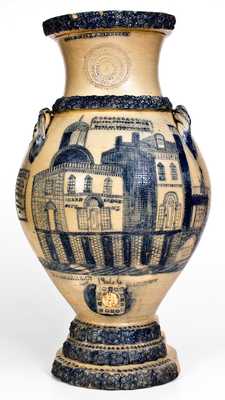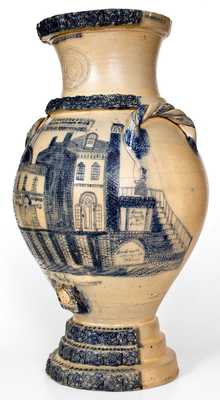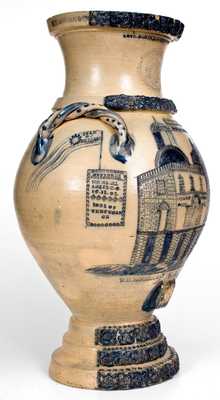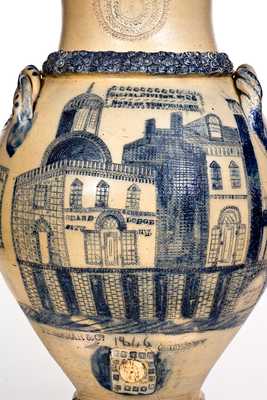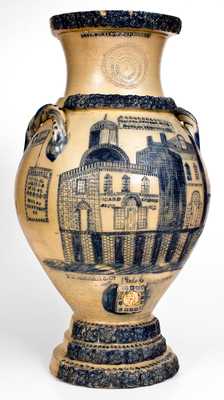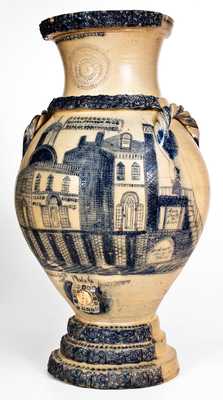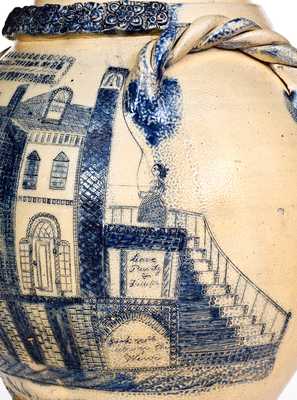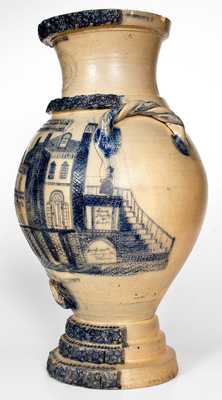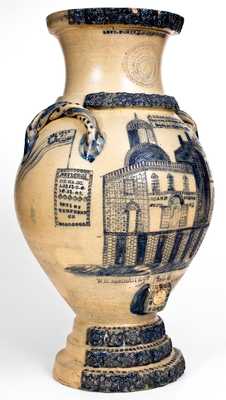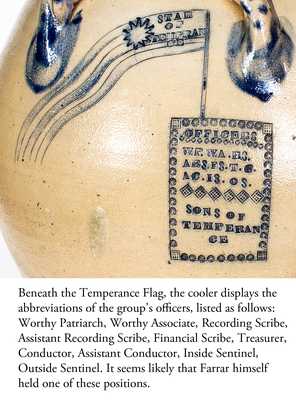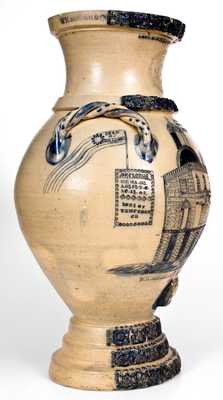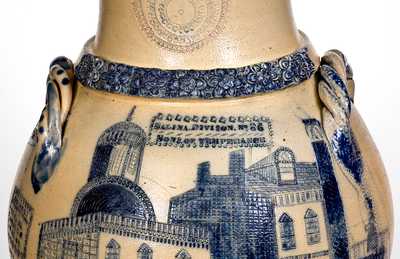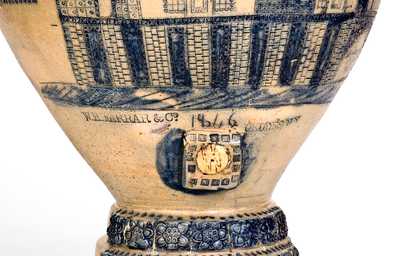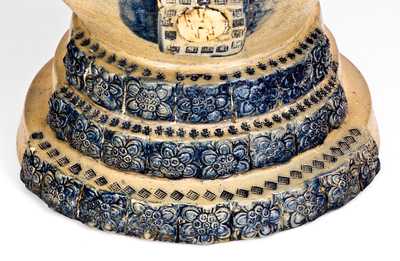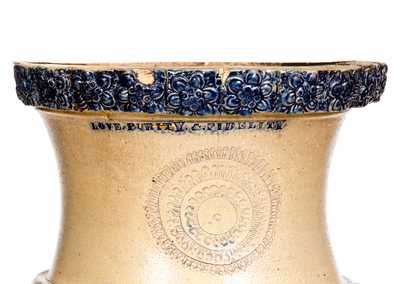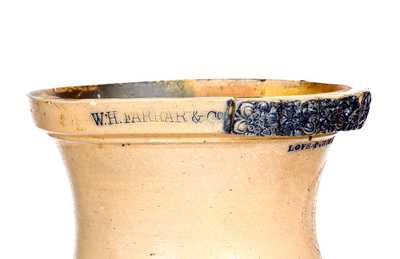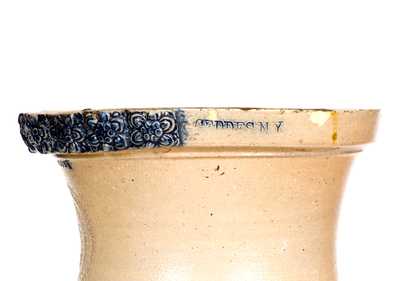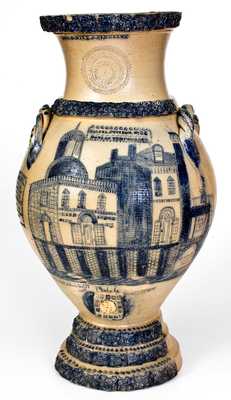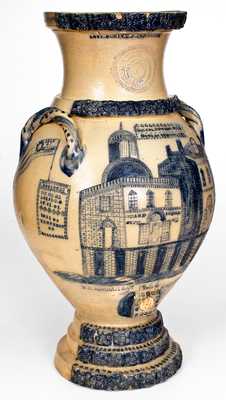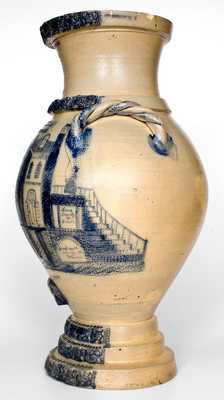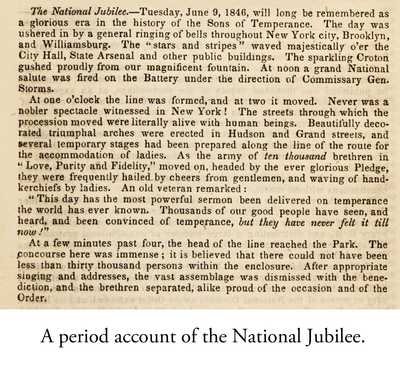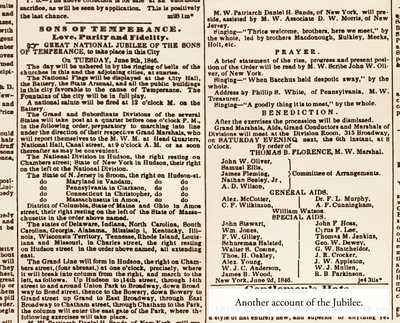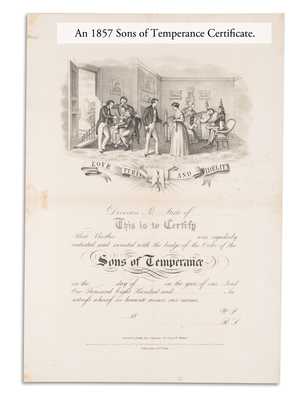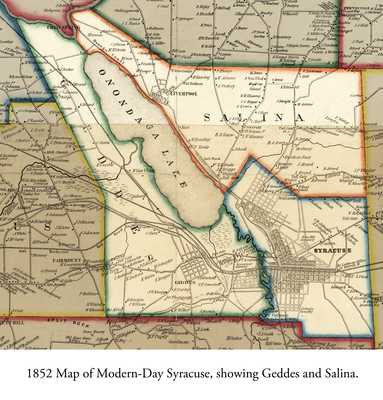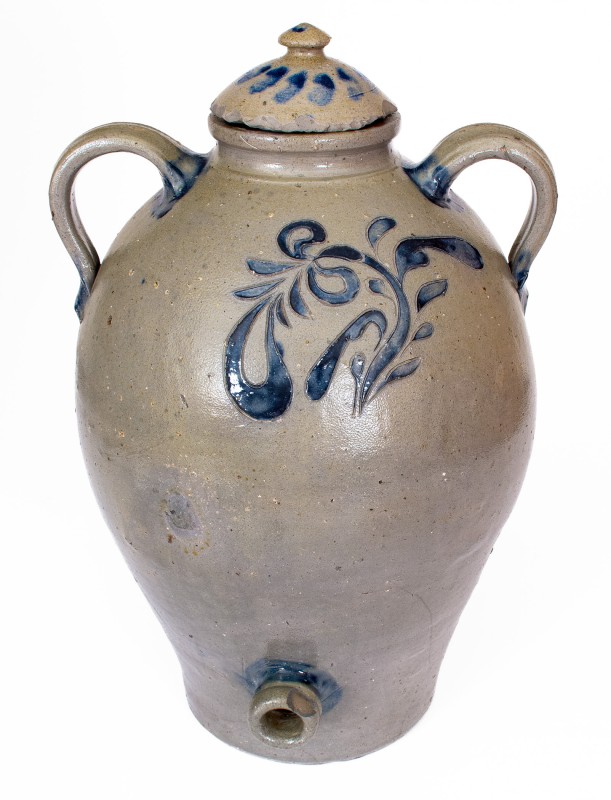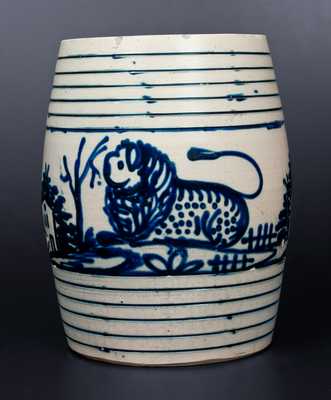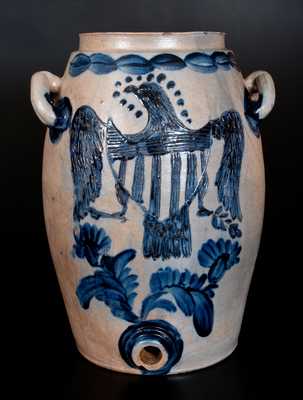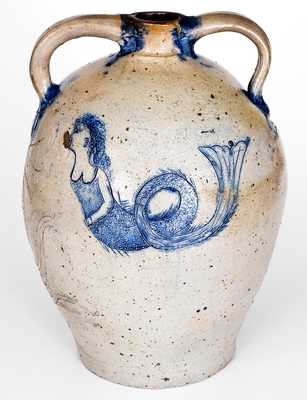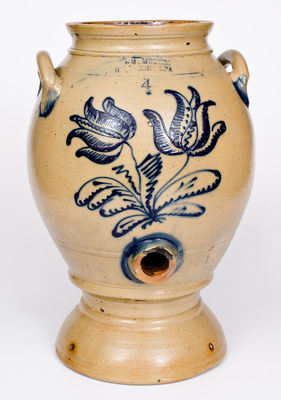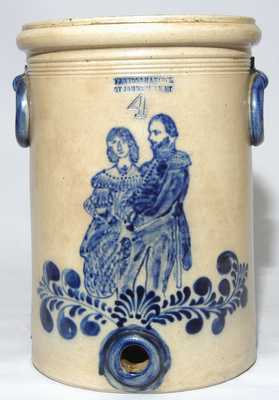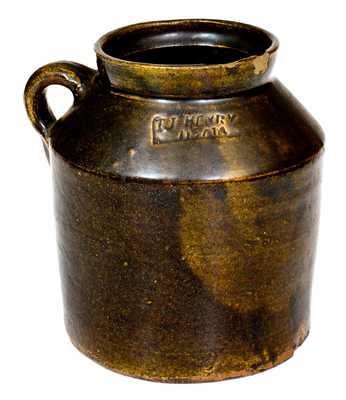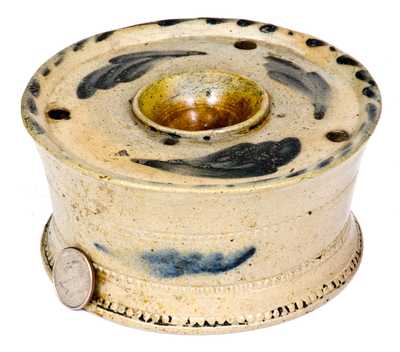Incomparable Seven-Gallon Stoneware Water Cooler with Exuberant Incised and Impressed Decoration of New York City's Broadway, Stamped Twice "W.H. FARRAR & CO. / GEDDES, N.Y.," Dated 1846, gracefully-potted, ovoid water cooler with squared bunghole, stepped pedestal base, tall, flaring collar, and rope-twist handles; the front decorated with an incised, impressed, and cobalt-highlighted design of a New York City street scene of Broadway. The image depicts the celebration of the Great National Jubilee of the Order of the Sons of Temperance, a fraternal organization founded on the principle of abstinence from alcohol in New York City in 1842. The design illustrates the national headquarters of the organization, located at 315 Broadway and impressed "GRAND LODGE / CITY NY," beside a townhouse and a fire alarm bell tower with a female figure alighting a landing to ring the bell. (Period accounts note that the morning of the Jubilee was marked by a prominent ringing of bells.) The distinctive cupola of New York Hospital, located at 319 Broadway (adjacent to the Sons of Temperance headquarters and a key New York landmark of the time) is visible behind the Grand Lodge. The order's three degrees of membership (and its motto), "Love Purity & Fidelity," are inscribed beneath the figure of the woman; below them, a portico surmounts the inscription, "Look not upon the wine," taken from Proverbs 23:31 and referencing the evils of alcoholic drink. An intricately-patterned design of Broadway's cobblestone street forms a base for the architectural designs above. The left side of the cooler depicts a large flag bearing the "STAR OF TEMPERANCE," emanating from a cartouche with a list, by abbreviation, of the positions of the society's officers. The handles, twisted to resemble rope, feature striped and spotted cobalt decoration. The vessels' extravagant pedestal base is further ornamented with impressed and cobalt-highlighted diamond and cross motifs, as well as rows of sprig-molded and applied blocks depicting flower blossoms, also highlighted in cobalt slip. This molded decoration is further applied at the cooler's rim and at the base of its stylishly-thrown collar. The collar is impressed with the three degrees of the society's membership, "LOVE, PURITY & FIDELITY," highlighted in cobalt above a radiating medallion of impressed decoration.
The Broadway Cooler, while depicting an 1846 celebration at the Sons of Temperance National Headquarters in Manhattan, bears a stamp on the upper body for the "SALINA DIVISON. NO. 86 / SONS OF TEMPERANCE," located in part of present-day Syracuse, the city in which the cooler was made. The cobalt-highlighted maker's mark of Geddes (now Syracuse) potter, William H. Farrar, is proudly stamped at both the rim and body of the cooler, along with its year of manufacture, 1846, above the bunghole. Born circa 1813, Farrar was among the country's most influential 19th century potters, most well-known for the artistic slip-trailed stoneware he produced at his Geddes shop. However, his interests in American ceramic production were far-reaching as he was also involved in the United States Pottery Company of Bennington, VT and the Southern Porcelain Company of Kaolin, SC, both of which produced molded wares during the mid 19th century. This cooler is obviously his masterpiece.
The Order of the Sons of Temperance was founded in September 1842 in New York City, born out of a meeting held at 71 Division Street in a building called Teetotalers Hall. From a mere sixteen men primarily involved in the printing and publication trade, within five years the organization would boast over 60,000 contributing members nationally, broken up into a considerable number of local divisions. While Salina Division's membership and exact date of institution are unknown, based on its designated number, 86, the group came into existence in or about the fall of 1845, less than a year before the Jubilee. It seems incredibly likely that William H. Farrar was himself involved with the Salina Division.
This creation's extravagant decoration is unprecedented in 19th century American ceramic production. Hand-incising and at least sixteen different decorative stamps, impressed in a variety of ways, were used to ornament this work, creating a design of scope, detail, and perspective, previously undocumented in American stoneware. (This high level of stamping may relate to the involvement of print makers in the society.) The impressed knobs and hinges on the buildings' doors, the buildings' dentile molding, the various Federal-style dormers with curved muntins, and the three-quarter view of the scene itself, indicate the hand of a folk artist whose abilities are unmatched in American stoneware decoration. The female bell-ringer, adorned in a plaid dress and clutching the rope of the bell, adds a sense of dynamism and liveliness to the scene. Celebration is in order.
While a masterwork of decoration, this object is equally a masterwork of form. The curvaceous potting of the cooler, thrown as a flare-rimmed, pedestal-based urn, is among the most expressive that we have seen in the 19th century American stoneware craft. Considered among the finest American stoneware forms, the pedestal-based cooler style is seen in masterpieces from a number of manufactories throughout the country. None, however, appear to match this object in the extravagance of its potting. In addition, the vessel's imposing, seven-gallon size enhances the beauty of the form, the grandeur of the decoration, and, ultimately, the piece's visual impact on the viewer.
Unparalleled in artistry, this work is regarded as the finest example of American salt-glazed stoneware to come to auction since the famous "Elizabeth Crane / 1811" punch bowl crossed the block in 1978. Superlatives fail to describe the importance of this object, which pushes the limits of the medium of clay and ranks among the greatest examples of American utilitarian pottery in existence. Provenance: A completely fresh-to-the-market, recently-discovered work. Family history indicates this cooler was used during the 19th century to serve ice water at the Hanchett Inn of Ellisburg, Jefferson County, NY. The fact that an American ceramic masterwork of this quality has gone undocumented for 170 years is remarkable. Excellent condition for a fragile form that is typically found with moderate to significant damage, either incurred during or after the firing. A 3 3/4" x 1 3/4" reglued section to rim on front. Shallow rim chips. A 1 1/4" x 1" reglued base chip on reverse and a minor base chip on reverse. Reglued breaks to proper right handle. H 26".

